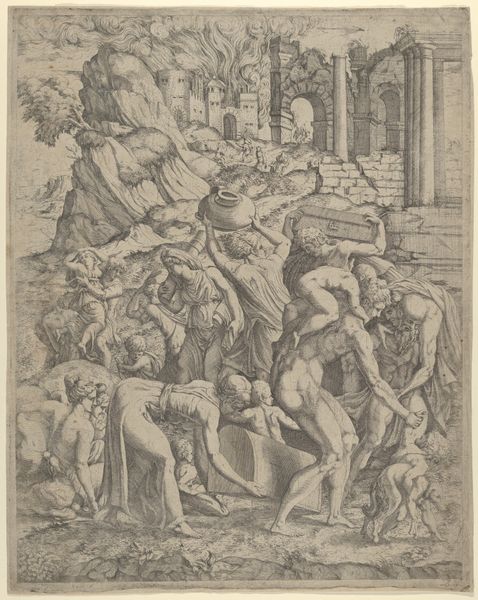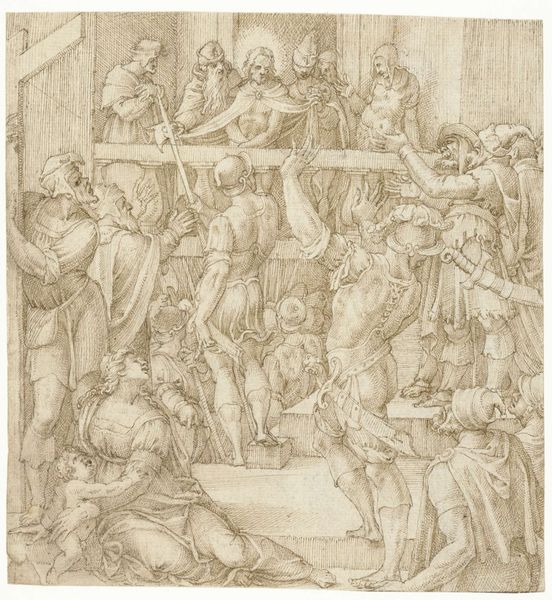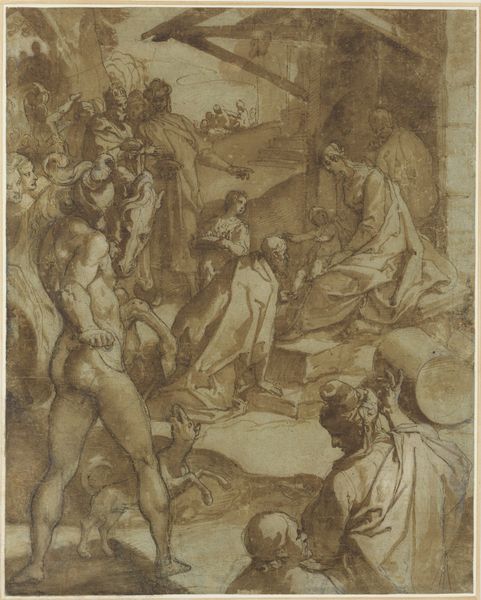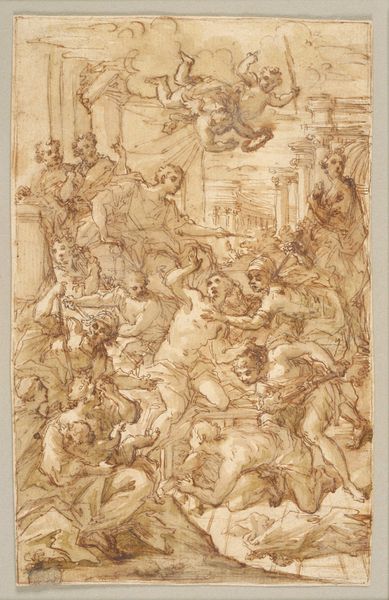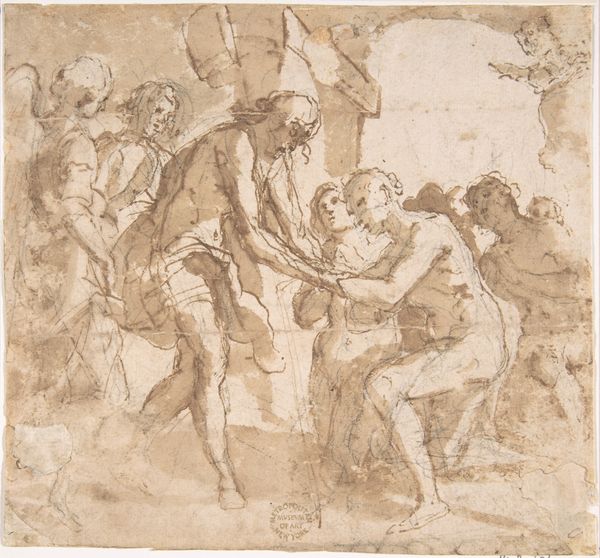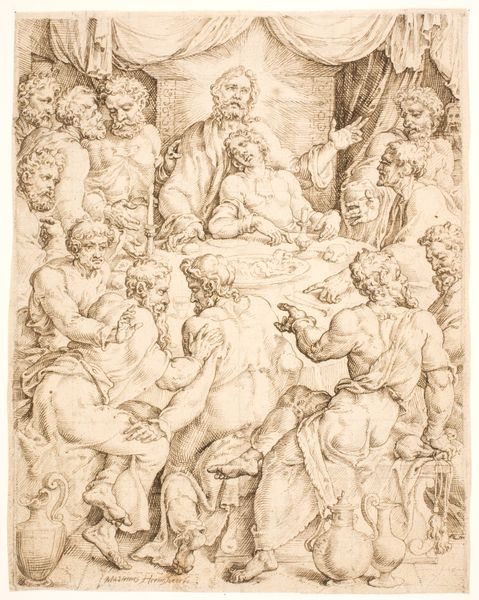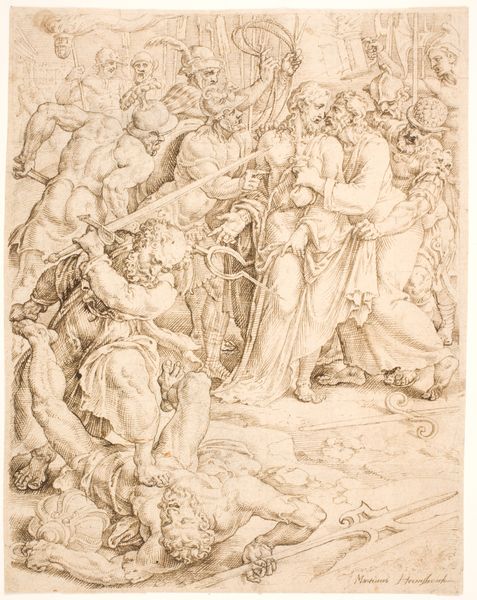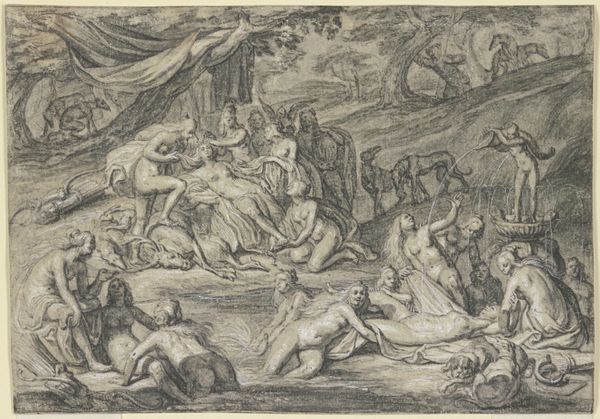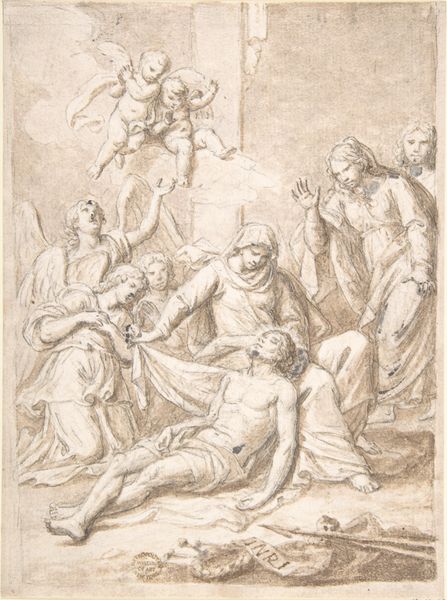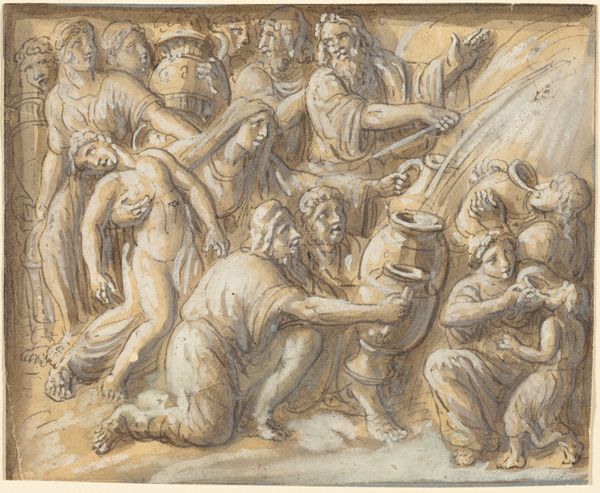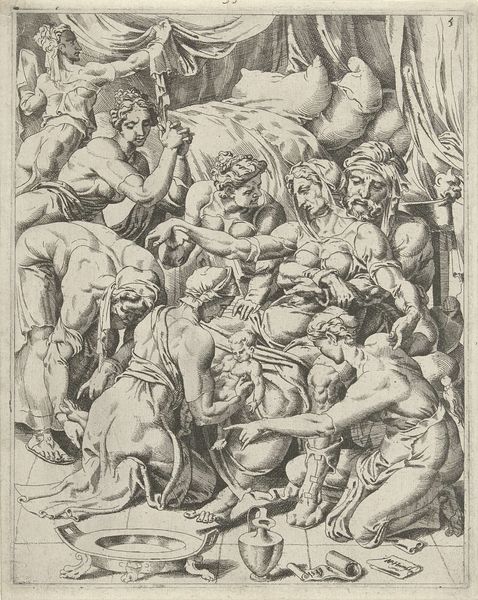
drawing, print, charcoal
#
drawing
#
narrative-art
# print
#
charcoal drawing
#
mannerism
#
figuration
#
soldier
#
men
#
charcoal
#
history-painting
#
charcoal
#
italian-renaissance
Dimensions: 16-9/16 x 11-7/16 in. (42.0 x 29.0 cm)
Copyright: Public Domain
Curator: The visceral power of Aurelio Luini’s “The Martyrdom of Saint Lawrence,” created sometime between 1580 and 1595, really hits you, doesn’t it? Currently residing at the Metropolitan Museum of Art, this charcoal drawing captures a moment of intense human suffering. Editor: Absolutely. The overwhelming mood is undeniably brutal. You’re immediately struck by the dynamism of the composition. All those bodies crowding around...there's this nervous energy created by the charcoal that gives it a nightmarish quality. Curator: And what about the materials? Think about it: charcoal on paper. Such humble substances to depict such an extravagant act of state-sponsored murder. Luini transforms a readily available medium into something quite unsettling here. I find the material reality of its making just fascinating in its contrast with the subject. Editor: It's difficult to ignore the historical context, really. This work exists within a tradition of martyr imagery – specifically intended to showcase faith's triumph in the face of political or social adversity. How might Luini's piece speak to the politics of image making within the Counter-Reformation, for instance? The intensity here seems like it was consciously made to evoke an emotional response and drive viewers back to the Church. Curator: Agreed. The image as propaganda, definitely. And consider the physical creation process. Was this a preparatory sketch, perhaps for a larger piece, influencing its perceived value? How the piece functions in Luini’s artistic economy as a whole is key, given the ready availability of its materials. Is that partially the point—to democratize access to devotion, if we’re talking circulation of copies? Editor: It raises the question of patronage as well, of course. Someone commissioned or purchased this. What statement were they looking to make, politically or spiritually, through owning an image like this? To see it in a private space would make the image almost an accusation in one's drawing room or study. Its impact lies with where and who gets to look. Curator: The intersection of material access and socio-political context you lay out presents fascinating avenues for thought. This dark drawing compels reflection, reminding us how artistry converts earthly materials and societal conditions into impactful, lasting commentary. Editor: Exactly. It goes to show how looking closely at art from the past helps us reflect on ourselves, our world, and the enduring role of visuals in shaping collective identity even now.
Comments
No comments
Be the first to comment and join the conversation on the ultimate creative platform.
